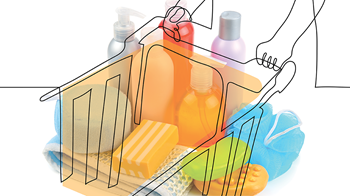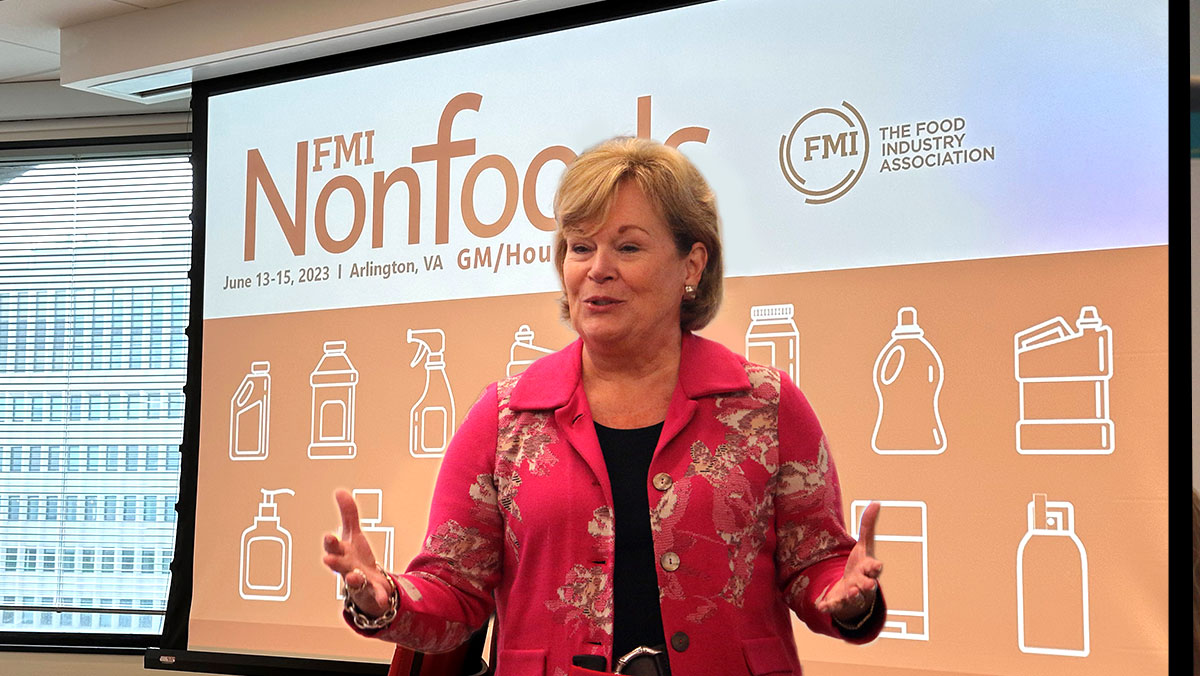This is the third blog from FMI's nonfoods in grocery stores series. We share compelling insights from our Power of Nonfoods research among shoppers and industry perspectives to explore nonfoods' role in the food retailing industry.
By: Tom Duffy, Senior Advisor, Industry Relations, FMI

I admit it. I don't really think about shampoo and soap that often. Don't get me wrong; I use personal care products daily and their quality matters to me, but I'm not the primary decision maker in our household and I don't keep inventory.
So, to write this post, I decided to take a rollcall of our various bottles and bars—and I was amazed at how much we had. Our bathroom has six bottles, including my 3-in-1 shower gel and a range of soaps, shampoos, and conditioners that my wife rotates depending on the day's need. We also keep a selection on hand for guests as well as a collection of travel-sized bottles for, well, travel.
Finally, there's the small stock we keep on hand so that we never run out.
That makes for a lot of personal care products, each playing its own role. It's no wonder people tend to buy a wide variety of products; there are a lot of variables in this category! Shoppers have a broad range of needs and tastes when it comes to soap, shampoo, conditioner and shaving products. They also have to weigh a number of considerations such as quality, brand, selection and variety along with price and best value.
FMI's Power of Nonfoods report untangles that data behind this robust, complex market. Here are some of the insights:
- Grocery stores make up 26% to 28% of the personal cleansing, hair care, and shaving product markets for a total $11 billion dollars in sales annually. That's well behind mass retailers who take up 52% to 56% of the market.
- Personal care products remain a largely brick and mortar market, with 41% to 42% of consumers buying them exclusively in stores and 20% to 21% buying them mostly in stores.
- Almost half (43% to 49%) of consumers buy their personal care products monthly, with weekly purchasers dropping down to 10% to 14%.
- Seventy-two percent of personal care product purchases are planned. (Not a lot of impulse soap buying, apparently.) Seventy-seven percent to 84% of consumers buy them as part of their normal shopping trip.
- Very few respondents (15% to 18%) have changed where they purchase these items in past 12 months.
- High value and low cost play the biggest roles in decision-making. Quality and variety aren't priorities, but consumers are very product-loyal in this sector, with 34% to 36% seeking brands that they prefer.
Despite the variety of personal care products in my household, my family is aligned on a few issues; we want our personal care products to be free of unnecessary chemicals and environmentally-friendly. We also want to make certain all these products are child-safe.
Beyond that, we still have our different tastes and needs, thus all the different products. If one family can generate this many purchases, it's an indication of what a significant opportunity the personal care product space is for grocers.


 Industry Topics address your specific area of expertise with resources, reports, events and more.
Industry Topics address your specific area of expertise with resources, reports, events and more.
 Our Research covers consumer behavior and retail operation benchmarks so you can make informed business decisions.
Our Research covers consumer behavior and retail operation benchmarks so you can make informed business decisions.
 Events and Education including online and in-person help you advance your food retail career.
Events and Education including online and in-person help you advance your food retail career.
 Food Safety training, resources and guidance that help you create a company food safety culture.
Food Safety training, resources and guidance that help you create a company food safety culture.
 Government Affairs work — federal and state — on the latest food industry policy, regulatory and legislative issues.
Government Affairs work — federal and state — on the latest food industry policy, regulatory and legislative issues.
 Get Involved. From industry awards to newsletters and committees, these resources help you take advantage of your membership.
Get Involved. From industry awards to newsletters and committees, these resources help you take advantage of your membership.
 Best practices, guidance documents, infographics, signage and more for the food industry on the COVID-19 pandemic.
Best practices, guidance documents, infographics, signage and more for the food industry on the COVID-19 pandemic.
